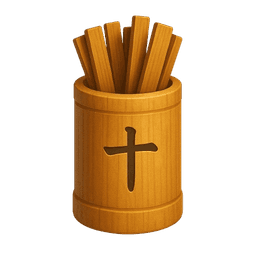
 Meiun Fortune Telling
Meiun Fortune TellingThe custom of omikuji poetry was first introduced to Japan from China and developed into a unique Japanese divination method on Mount Hiei—"Hyakusen Omikuji" (100 Poem Omikuji). It was initially popular mainly in the Kansai region and later spread to Kanto during the Edo period. Through adaptations oriented toward common people, it evolved into what we see today as the "Sensō Kannon Omikuji."
Sensō-ji Temple is famous for its high proportion of "凶" (bad fortune) omikuji. There are seven types of omikuji in total: 大吉 (great fortune), 吉 (good fortune), 半吉 (half good fortune), 小吉 (small good fortune), 末吉 (end good fortune), 末小吉 (end small good fortune), and 凶 (bad fortune). If you draw an omikuji you don't like, you can tie it to a specific tree in the temple, hoping to turn bad fortune into good. If you draw a good omikuji, you can take it home with you. Drawing omikuji usually requires paying an offering fee, then shaking the omikuji box and finding the corresponding omikuji based on the number that comes out.
Types of Omikuji
Steps to Draw Omikuji
What to Do After Drawing Omikuji
We are a website dedicated to BaZi fortune telling.
We strive to provide the most accurate BaZi fortune-telling services to our users.
support@meiun.ai
copyright © 2025 Meiun.ai